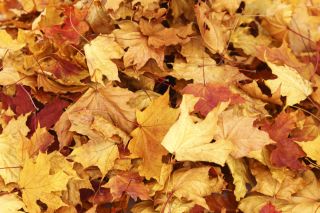
Collect fallen autumn leaves and you can use them to make gardeners’ gold – also known as leafmould, one of the best soil improvers you can’t buy.
Go round with a rake collecting your leaves once a week so they don’t build up into too thick a layer on the ground. Lawns covered in leaves struggle to get enough light to stay healthy, so give them a good rake over once a week with a lightweight leaf rake, available from the garden centre here in Bitton and Warminster, sweeping up as many leaves as you can. While you’re at it, winkle out any leaves which have collected in the crowns of perennials and shrubs: if you leave them there, they can cause rots to set in.
Once you’ve collected all your leaves, instead of taking them to the tip or throwing them on the bonfire stack them together and make leafmould, to turn your soil into the light, sweetly scented loam of your dreams.
Leaves take longer than other organic matter to rot down, so give them their own bin separate from the main compost heap. They also need plenty of ventilation: the ideal leafmould bin is made from chicken wire stapled to four corner posts to make a box about 1m square. If you haven’t room for a dedicated leafmould bin, just stack your leaves into black plastic bin bags and puncture them here and there to let the air in.
Leaves rot down more slowly than compost, but in a year's time, you'll have dark, crumbly mould to spread thickly on your soil. It opens up clay soils, helps lighter soils to hold on to moisture and nutrients, and your plants love it. Wait another year and it'll even be fine enough to use in home-made seed composts. Not bad for something you'd normally throw out with the garden rubbish.




